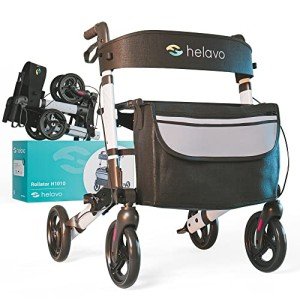What Makes The Stable Walker So Effective? In COVID-19?
Exploring the Innovations of Stable Walker Technology
In the ever-evolving world of robotics and automation, the principle of a “stable walker” has actually become a remarkable crossway of design, technology, and biomechanics. A stable walker refers to a robotic system efficient in preserving balance and passing through various terrains, imitating human-like motion. This blog site post supplies an extensive expedition of stable walkers, their parts, applications, and the technological advancements that continue to push the limits of what these devices can attain.
- * *
What Makes a Walker “Stable”?
At its core, stability in a robotic walker is defined by its capability to stay upright and browse a variety of surface areas without falling. A number of elements contribute to a walker's stability:
- Center of Gravity: A lower center of gravity usually enhances stability. Designers frequently put parts strategically to enhance this aspect.
- Sensing units: Advanced sensing units help the walker find changes in the environment, enabling real-time changes to maintain balance.
- Actuators: These components enable movement and play a crucial function in stable navigation.
- Algorithms: Sophisticated algorithms process sensor data and identify the best movements, enabling adaptive walking.
- * *
Table 1: Key Components of Stable Walkers
Part
Function
Sensors
Find environmental conditions and help in balance
Actuators
Move movement in different instructions
Control Systems
Incorporate sensor input to make real-time balance changes
Power Supply
Provide required energy for functions and motion
- * *
Applications of Stable Walkers
The applications of stable walkers are large and differed, spanning several fields. Below are some crucial locations where these technologies are making an effect:
Healthcare:
- Rehabilitation: Stable walkers can assist patients recovering from injuries or strokes by providing support while they regain their mobility.
- Exoskeletons: Wearable robotic gadgets can aid people with mobility disabilities, enabling them to walk once again.
Browse and Rescue Operations:
- Unmanned stable walkers can navigate difficult terrains during search operations after natural catastrophes. They are vital in reaching areas that are inaccessible to humans or wheeled vehicles.
Elderly Assistance:
- Robotic walkers created for the elderly can assist maintain independence by providing support for movement and navigation around the home.
Industrial Applications:
- In settings where heavy loads need to be transported, stable walkers can help employees by bring items without the threat of losing balance.
- * *
Table 2: Applications of Stable Walkers
Application Area
Use Case Description
Healthcare
Rehabilitation support and exoskeletons for mobility
Browse & & Rescue
Navigating disaster-struck areas for recovery operations
Elderly Assistance
Supporting mobility for elderly individuals
Industrial
Bring heavy loads in intricate environments
- * *
Technological Advancements
Robotic walkers have advanced significantly over the previous couple of years due to enhancements in numerous critical locations:
- Sensor Technology: Enhanced sensing units such as LiDAR, ultrasonic, and electronic cameras provide comprehensive ecological mapping, permitting walkers to make more informed decisions on the move.
- Expert System (AI): AI and maker knowing algorithms facilitate much better forecast models for movement, allowing robotic walkers to gain from their experiences and improve in time.
- Battery Life: The advancement of lighter, more effective battery innovations makes sure that stable walkers can run longer with less regular recharging.
- Products Science: Innovations in products, such as lightweight composites, boost the sturdiness and performance of robotic walkers.
- * *
Challenges Facing Stable Walkers
In spite of the amazing advances in stable walker technology, many difficulties remain. A few of these include:
- Complex Environments: Navigating unforeseeable terrains is still a considerable difficulty for many walkers.
- Expense and Accessibility: Many advanced robotic walkers are costly, limiting their accessibility to a broader audience.
User Adaptation: Training users to successfully operate or adjust to robotic walkers is important, particularly in healthcare applications.
- *
Often Asked Questions (FAQ)
1. Can stable walkers be utilized outdoors?Yes, numerous stable walkers are developed to run in various outdoor conditions, with features to pass through unequal surface.
2. How do stable walkers differ from traditional wheelchairs?Stable walkers supply active support, enabling mobility and movement similar to walking, whereas wheelchairs provide seated assistance without enabling walking motion.
3. Are Foldable Rollator Walker for older adults?Yes, they can considerably enhance the security of older grownups by offering stability and reducing the danger of falls. Nevertheless, users must be trained on their proper usage.
4. What is the future of stable walker technology?The future points towards more autonomous systems using advanced AI, enabling walkers to make choices in real-time and adjust to user preferences and environments.
- * *
The expedition of stable walker technology discovers a remarkable world filled with potential. These advanced makers mix engineering, artificial intelligence, and human-centered design to address critical obstacles in mobility and availability. With continuous advances set to more refine their capabilities, stable walkers represent a key development with the pledge to transform how individuals move and communicate with their environments. Whether in medical facilities, catastrophe zones, or homes, the effect of stable walkers continues to grow, enhancing lives and offering support in ways that were once thought difficult.
As innovations develop and the integration of AI and effective products continues, the future of stable walkers appears not only appealing however necessary ahead of time human mobility and independence.
